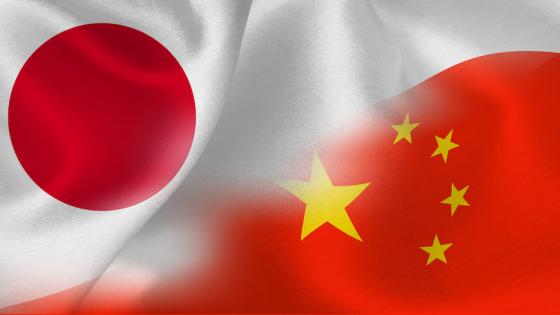Japan has signed multiple regional trade agreements (RTAs), including the recent Regional Comprehensive Economic Partnership (RCEP), which came into force in January 2022. These RTAs have been expected to contribute to an increase in Japan’s exports by enjoying reduced tariffs, a theoretical phenomenon known as the ‘trade creation effect’. To empirically identify this effect, the ex-post studies of RTAs have applied global trade data to the gravity equation, which explains the amount of trade between two countries. However, not all studies have necessarily found such a positive effect on trade among RTA members.
The ex-post analyses on RTAs have also been conducted in Japan, but evidence of the trade creation effect has been scant. For example, in a recent study, Yamanouchi (2019) estimated the gravity equation with the full set of fixed effects. However, the average effects of RTAs on Japan’s exports to partner countries were almost zero. Indeed, the effects of some RTAs, such as that with Singapore, were found to be negative and statistically significant. These results are not atypical; many ex-post studies on Japan’s exports have shown similar results. Such unexpected results are also found in other countries.
How can we explain the small or even negative effects of RTAs on trade? The small trade creation effects may be driven by the fact that tariff reduction by RTAs is mostly gradual. Also, the effects of eliminating or changing non-tariff measures (NTMs) take some time to realise. However, these cannot explain the negative effects on observed exports. One possible explanation is that RTAs may incentivise countries to introduce new NTMs instead of reducing tariffs (e.g. Niu et al. 2020, Beverelli et al. 2019). If the negative effects of NTMs are large, exports may decrease after RTAs come into force. However, the introduction of such NTMs has not been observed in the case of Singapore after concluding the RTA with Japan. Therefore, this NTM story does not explain the negative effects on Japan’s observed exports.
Against this backdrop, in our new research (Baek and Hayakawa 2022), we intend to present one solution by shedding light on the change in fixed costs. Starting exporting requires firms to incur monetary and non-monetary costs for international transactions such as international payments or customs procedures. Similarly, when a firm starts outward foreign direct investment (FDI), it has to pay various outlays, including management expenses, installation costs, and costs relating to investment risks. Suppose that the magnitude of tariff reduction through RTAs is small, as is the case of tariff reduction by Singapore in the Japan-Singapore RTA. If various non-tariff chapters in the RTA contribute to reducing fixed costs for FDI to a greater degree than those for exports, it may promote Japanese firms’ FDI in Singapore and their local production and sales rather than exports from Japan to Singapore.
To verify this hypothesis, we first compute the ratio of fixed costs for FDI to those for exports, which is called the ‘fixed cost ratio’ (FCR). We solve one equation derived from the theoretical model of choice between exports and FDI presented by Helpman et al. (2004). Applying this methodology to exports and FDI from Japan to 68 countries between 2002 and 2018, we solve the only unknown variable in the equation, the FCR, by country, industry, and year.
Our findings can be summarised as follows. In terms of median values, the FCR is estimated to be approximately 10, indicating that the fixed costs for FDI are approximately ten times higher than those for exports. Furthermore, these median values decline over time. In addition, relatively large values can be found in the chemical, general machinery, and transport equipment industries. By region, African countries have the highest median values.
In the next step, we empirically examine the determinants of the calculated FCR by regressing the FCR on various observable variables. According to the results, RTAs have negative and statistically significant effects on FCR, implying that RTAs decrease fixed costs for FDI to a greater degree than exports. Quantitatively, RTAs are found to have the effect of lowering the FCR by about 36%. These effects appeared one year after the RTA came into force.
Last, we conduct a simulation analysis assuming an RTA between Japan and China. Based on the regression result above, we reduce the FCR to China by approximately 36%, set tariff rates for all industries in China from Japan to zero, and calculate the ratio of exports to FDI sales using the key equation mentioned above. As shown in Table 1, The RTA between Japan and China is estimated to increase local sales by FDI rather than exports in all industries. Especially, high growth in local sales is expected in leather, office machinery, and precision machinery products. This result indicates that an RTA between Japan and China would incentivise Japanese firms to set up production in China and sell locally rather than exporting from Japan.
Table 1 Changes in the ratio of exports to FDI sales by Japan in the RTA between Japan and China
Source: Baek and Hayakawa (2022)
These results demonstrate one of the possible mechanisms for the negative effect of RTAs on trade. Note that this analysis does not explain the effect on the absolute value of exports; it only indicates a relative increase in local sales. However, in the case of Japan’s RTA with Singapore, the tariff reductions by Singapore amounted to almost zero. Tariff reductions will also be minimal when concluding additional RTAs with existing RTA partner countries. For example, Japan has four RTAs with Vietnam, including the Japan-Vietnam RTA, ASEAN-Japan Comprehensive Economic Partnership, Comprehensive and Progressive Agreement for Trans-Pacific Partnership (known as CPTPP), and RCEP. In such cases, the trade creation effect of a new RTA through the reduction in tariffs will be trivial. It will induce exporters to switch to investing in the partner countries, decreasing the absolute value of exports.
Editor’s note: The main research on which this column is based (Baek and Hayakawa 2022) first appeared as a Discussion Paper of the Research Institute of Economy, Trade and Industry (RIETI) of Japan.
References
Baek, Y and K Hayakawa (2022), “Fixed Costs in Exporting and Investing”, Research Institute of Economy, Trade and Industry (RIETI), RIETI Discussion Paper Series 22-E-023.
Beverelli, C, M Boffa and A Keck (2019), “Trade Policy Substitution: Theory and Evidence”, Review of World Economics 155: 755–783.
Helpman, E, M Melitz and S Yeaple (2004), “Export Versus FDI with Heterogeneous Firms”, American Economic Review 94(1): 300–316.
Niu, Z, C Milner, S Gunessee and C Liu (2020), “Are Nontariff Measures and Tariffs Substitutes? Some Panel Data Evidence”, Review of International Economics 28(2): 408–428.
Yamanouchi, K (2019), “Heterogeneous Impacts of Free Trade Agreements: The Case of Japan”, Asian Economic Papers 18(2): 1-20.



